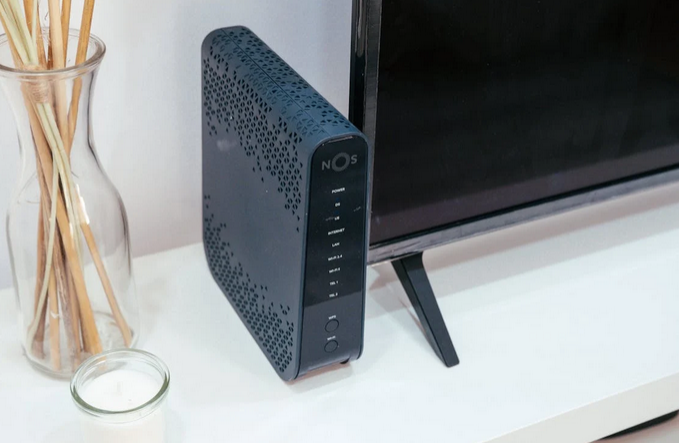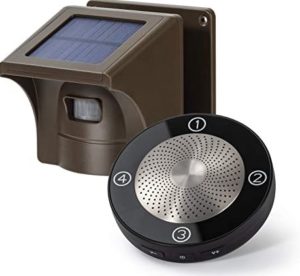Why Your Wi-Fi Hates You at 3 PM (And How to Fix It Forever)
Picture this: it’s 3 PM, and you’re settling in for your daily binge of the latest season of your favorite show. Just as you hit play, your Wi-Fi decides it’s time to take a break. The video buffers, the screen freezes, and you’re left staring at that spinning wheel of doom. Frustrating, right?
You’re not alone in this struggle. Many people experience similar connectivity issues during peak hours. But what causes this dilemma? Why does Wi-Fi seem to have its own schedule? Let’s dive into the reasons behind these pesky interruptions and explore how you can regain control over your internet speed—once and for all!
The ‘Netflix Rush Hour’
 The term “Netflix Rush Hour” might sound amusing, but it’s a real phenomenon. Around 3 PM, millions of viewers log on to stream their favorite shows. This surge in traffic creates significant congestion. Imagine rush hour traffic on the freeway, but instead of cars jamming the road, it’s data packets flooding your Wi-Fi network.
The term “Netflix Rush Hour” might sound amusing, but it’s a real phenomenon. Around 3 PM, millions of viewers log on to stream their favorite shows. This surge in traffic creates significant congestion. Imagine rush hour traffic on the freeway, but instead of cars jamming the road, it’s data packets flooding your Wi-Fi network.
Each household is vying for bandwidth and only so much can flow through at once. During this peak time, streaming services like Netflix consume massive amounts of data. When everyone hits play simultaneously, even the strongest connections can falter under pressure. You may notice slower speeds during these hours when you’re trying to catch up on episodes or binge-watch new releases.
Your Neighbor’s Router Is Literally Fighting Yours
Ever feel like your Wi-Fi sabotages you right when you’re about to hit send? Turns out, it’s not just bad luck. Picture this: your neighbor’s router is basically shouting over yours in a digital turf war. When too many routers blast signals on the same frequency, they turn your internet into a gladiator arena—where everyone’s connection fights to the death for bandwidth.
This battle can worsen during peak hours, like after school or work when everyone logs on simultaneously. If both routers are using overlapping channels, it creates a digital tug-of-war. You might think you’re alone in this struggle, but chances are others nearby are feeling the strain too.

Sunlight Can Mess With Wi-Fi
Sunlight can be a sneaky disruptor of your Wi-Fi signal. Direct sunlight hitting your router might seem harmless, but it can lead to overheating. An overheated device struggles to transmit data effectively. Moreover, UV rays can weaken the materials used in many routers over time. This gradual degradation affects performance and range, leaving you grappling with slower speeds.
Windows also play a role. If your router is stationed near glass that allows sunlight to pour in, interference may occur due to reflections or heat trapped inside. Even indoor plants placed too close can absorb some of those precious signals if they’re substantial enough. So before blaming slow internet on external factors, consider how much sunshine your setup gets daily!
Your ISP’s Dirty Little Throttling Secret
You may think you’re getting the speed you pay for, but there’s a chance your Internet Service Provider (ISP) is pulling some sneaky moves. Throttling—when ISPs deliberately slow down your internet connection—is more common than you’d like to believe. During peak hours, many providers throttle users to manage network congestion. They prioritize certain traffic types while leaving others in the dust. Streaming services often take the brunt of this slowdown, making that afternoon binge-watch feel painfully sluggish. But why would they do this? For one, it helps them maintain overall service quality across their entire customer base.
However, as a subscriber paying for high-speed access, it feels frustrating and unfair. To expose this dirty little secret, keep an eye on your speed during different times of the day. If you notice significant drops at 3 PM regularly, it’s time to rethink how you approach Wi-Fi usage and what options might be available beyond your current plan.
How to ‘Schedule’ Your Wi-Fi for Peak Speeds

If you’re tired of battling slow Wi-Fi speeds, scheduling your usage can be a game changer. Think about when you really need that high-speed connection. If evenings are prime time for streaming or gaming in your household, consider adjusting your router settings to prioritize bandwidth during those hours.
Many modern routers offer Quality of Service (QoS) features. This allows you to allocate more speed to specific devices or applications at certain times. For instance, if the kids are streaming cartoons after school at 3 PM, set the router to give them priority until dinner time.…
Read More »


 One of the primary roles of GPS tracking in guard deployment is real-time location tracking. With GPS-enabled devices, firewatch guards can be easily monitored and tracked by their supervisors. This ensures that guards are present at their designated locations and provides an accurate record of their movements. Real-time location tracking enables immediate response in case of emergencies or any unauthorized movements, allowing for prompt action to be taken when required.
One of the primary roles of GPS tracking in guard deployment is real-time location tracking. With GPS-enabled devices, firewatch guards can be easily monitored and tracked by their supervisors. This ensures that guards are present at their designated locations and provides an accurate record of their movements. Real-time location tracking enables immediate response in case of emergencies or any unauthorized movements, allowing for prompt action to be taken when required. Another important role of GPS tracking is the ability to record and analyze historical data. GPS tracking systems can store information on guard movements, response times, and patterns of activity. Supervisors can use this data to identify areas for improvement or optimize guard deployment strategies based on historical trends. By analyzing historical tracking data, supervisors can make informed decisions regarding resource allocation, scheduling, and training requirements. GPS tracking technology plays a vital role in guard deployment for fire watch safety. Real-time location tracking ensures guards are present at designated locations while geofencing and alerts enhance accountability and prevent unauthorized access.
Another important role of GPS tracking is the ability to record and analyze historical data. GPS tracking systems can store information on guard movements, response times, and patterns of activity. Supervisors can use this data to identify areas for improvement or optimize guard deployment strategies based on historical trends. By analyzing historical tracking data, supervisors can make informed decisions regarding resource allocation, scheduling, and training requirements. GPS tracking technology plays a vital role in guard deployment for fire watch safety. Real-time location tracking ensures guards are present at designated locations while geofencing and alerts enhance accountability and prevent unauthorized access.

 The first step to creating a successful app is understanding your app’s purpose and who you want to download it. For example, there are over two million apps in the App Store, many of them are games. There are also millions of other apps that serve various purposes like social networking, business, education, health, fitness, etc.
The first step to creating a successful app is understanding your app’s purpose and who you want to download it. For example, there are over two million apps in the App Store, many of them are games. There are also millions of other apps that serve various purposes like social networking, business, education, health, fitness, etc. You can use a tool like Justinmind to create a prototype of your app. This will help you determine the screens and user flow for your app. Once you have a prototype, create a user flow diagram to document the different paths users can take through your app. Creating a prototype and user flow diagram will help you determine the functionality of your app and how users will interact with it.
You can use a tool like Justinmind to create a prototype of your app. This will help you determine the screens and user flow for your app. Once you have a prototype, create a user flow diagram to document the different paths users can take through your app. Creating a prototype and user flow diagram will help you determine the functionality of your app and how users will interact with it. Another standard error most internet users make is to choose more bandwidth than they require. The problem here is that they end up paying for something they do not use hence waste money they could put to better use. Typically, internet providers have full bandwidth management to allow customers to select the bandwidth that they need and have a chance to change them if their need changes.
Another standard error most internet users make is to choose more bandwidth than they require. The problem here is that they end up paying for something they do not use hence waste money they could put to better use. Typically, internet providers have full bandwidth management to allow customers to select the bandwidth that they need and have a chance to change them if their need changes. When choosing an internet provider, you cannot afford to work with one whose connections are poor and unreliable. Because there so many providers, you need to find as much information of those you think you can work with, so you do not pick one with poor connection, frequent down-times, pathetic customer service, and even high prices.
When choosing an internet provider, you cannot afford to work with one whose connections are poor and unreliable. Because there so many providers, you need to find as much information of those you think you can work with, so you do not pick one with poor connection, frequent down-times, pathetic customer service, and even high prices. The other thing you can do to boost your web rankings is posting unique content. Most search engines look at the uniqueness of your content before ranking you. This is something you should pay close attention to when running your business website. Creating a new business website requires a lot. There are several things you should do to ensure you come up with the right type. They include:
The other thing you can do to boost your web rankings is posting unique content. Most search engines look at the uniqueness of your content before ranking you. This is something you should pay close attention to when running your business website. Creating a new business website requires a lot. There are several things you should do to ensure you come up with the right type. They include: This is the other thing that can determine the kind of experience users will have on your website. Search engines also consider this essential factor before ranking your website. You should, therefore, set up a fast loading website that can be accessed across multiple devices. Look for the best web designer who will create something perfect for you.
This is the other thing that can determine the kind of experience users will have on your website. Search engines also consider this essential factor before ranking your website. You should, therefore, set up a fast loading website that can be accessed across multiple devices. Look for the best web designer who will create something perfect for you. alarm system at strategic points where they can easily pick up signals of moving objects and send them to the receiver. When purchasing this type of security system, you should consider installation ease and their level of effectiveness. Look for a device that will send you accurate signals or instant alerts. Installing a driveway alarm in your residence can benefit you in so many ways which include:
alarm system at strategic points where they can easily pick up signals of moving objects and send them to the receiver. When purchasing this type of security system, you should consider installation ease and their level of effectiveness. Look for a device that will send you accurate signals or instant alerts. Installing a driveway alarm in your residence can benefit you in so many ways which include: security features. You can do the installation by yourself or seek help from experts who will do the job correctly. Look for a strategic spot to install them. Make sure it is an area where they cannot be easily detected. Make good use of this security feature to keep your home secure.…
security features. You can do the installation by yourself or seek help from experts who will do the job correctly. Look for a strategic spot to install them. Make sure it is an area where they cannot be easily detected. Make good use of this security feature to keep your home secure.… Technology keeps transforming various aspects of our lives. Once bulky inventions have been converted to small and ergonomic devices. Cameras, for instance, have been significantly changed by technological advances. While full-frame cameras are still in operations, there are now ergonomic spy pens that are incredibly small.
Technology keeps transforming various aspects of our lives. Once bulky inventions have been converted to small and ergonomic devices. Cameras, for instance, have been significantly changed by technological advances. While full-frame cameras are still in operations, there are now ergonomic spy pens that are incredibly small. If you genuinely intend to modify the sound that comes from your receiver, then you should go for one with advanced sound controls that will allow you to equalize the sound and carry out other functions like setting the clock and the rest. If you go for a low priced after-market PA speakers, then the chances are that it only uses the extra audio controls that are used in standard factory radios.
If you genuinely intend to modify the sound that comes from your receiver, then you should go for one with advanced sound controls that will allow you to equalize the sound and carry out other functions like setting the clock and the rest. If you go for a low priced after-market PA speakers, then the chances are that it only uses the extra audio controls that are used in standard factory radios. Check if the stereo system in question comes with auxiliary inputs, USB ports, as well as audio and video outputs that will allow you to expand your radio by connecting backseat video displays, portable music gamers, external amplifiers and powered speakers to your new receiver.
Check if the stereo system in question comes with auxiliary inputs, USB ports, as well as audio and video outputs that will allow you to expand your radio by connecting backseat video displays, portable music gamers, external amplifiers and powered speakers to your new receiver. You should note that outdoor security cameras that are designed for outdoor use have an IP rating. Remember that they ought to withstand harsh weather situations. Therefore, they have to be weather resistant and waterproof. When buying these cameras, remember to check an IP rating. Ideally, this is a two-digit number that shows you how a device is protected against liquids and solid objects such as dirt, rain, and more. If you reside in an area that receives a lot of rainfall and snow, you have to take IP rating seriously.
You should note that outdoor security cameras that are designed for outdoor use have an IP rating. Remember that they ought to withstand harsh weather situations. Therefore, they have to be weather resistant and waterproof. When buying these cameras, remember to check an IP rating. Ideally, this is a two-digit number that shows you how a device is protected against liquids and solid objects such as dirt, rain, and more. If you reside in an area that receives a lot of rainfall and snow, you have to take IP rating seriously. If you are planning to install your battery operated security camera outdoors in an environment that has a sharp contrast of lighting, then you should consider a wide dynamic range (WDR). In this case, you have an effective solution, even in challenging lighting scenarios. It can tackle various scenes with harsh lighting conditions and provides a perfect exposure in dark and bright areas. With the visibility and detail required for outdoor areas, WDR becomes more prominent.
If you are planning to install your battery operated security camera outdoors in an environment that has a sharp contrast of lighting, then you should consider a wide dynamic range (WDR). In this case, you have an effective solution, even in challenging lighting scenarios. It can tackle various scenes with harsh lighting conditions and provides a perfect exposure in dark and bright areas. With the visibility and detail required for outdoor areas, WDR becomes more prominent.


 Another essential feature of the helmet is the lens. Two options are available, and you can choose one depending on which one is the most comfortable for you. These two options include passive and auto-darkening lenses. Just like what its name suggests, a passive lens does not have an automatic adjustment to darken the shade when the light intensity changes. However, the lens is equipped with infrared filters to protect the eyes from damage.
Another essential feature of the helmet is the lens. Two options are available, and you can choose one depending on which one is the most comfortable for you. These two options include passive and auto-darkening lenses. Just like what its name suggests, a passive lens does not have an automatic adjustment to darken the shade when the light intensity changes. However, the lens is equipped with infrared filters to protect the eyes from damage. A wireless security camera has its own power supply. Thus, even when there is a power outage, you can keep tabs on the property. However, you will need to manually change the batteries and have them charged on a routine basis. It is advisable to get a unit with a rechargeable battery pack as you will not need to purchase batteries.
A wireless security camera has its own power supply. Thus, even when there is a power outage, you can keep tabs on the property. However, you will need to manually change the batteries and have them charged on a routine basis. It is advisable to get a unit with a rechargeable battery pack as you will not need to purchase batteries. Before shopping, you ought to know the number of security cameras you want. Also, you should know where you will place them to get an idea of what you will want to buy. Security cameras do more than just being there and recording your yard. They can help you even to know who is at the door.…
Before shopping, you ought to know the number of security cameras you want. Also, you should know where you will place them to get an idea of what you will want to buy. Security cameras do more than just being there and recording your yard. They can help you even to know who is at the door.…
 Creative people are now purchasing drones to help them take breathtaking photos. And the reason for this is that people want to be unique and so, they are embracing them because these gadgets can take pictures from angles and heights that are unimaginable. If you wish to keep up with these new and cool trends, then you need to purchase a drone, and here are tips for finding and buying the best.
Creative people are now purchasing drones to help them take breathtaking photos. And the reason for this is that people want to be unique and so, they are embracing them because these gadgets can take pictures from angles and heights that are unimaginable. If you wish to keep up with these new and cool trends, then you need to purchase a drone, and here are tips for finding and buying the best. The best part about using the internet to find a drone is that you will be able to read reviews before making a purchase. Understand that there are people before you who have bought and wrote reviews about them. Some drones may not be as good as the manufacturer will like you to believe. Therefore, you need reviews from people who have used them for a period so that you can make a perfect choice.
The best part about using the internet to find a drone is that you will be able to read reviews before making a purchase. Understand that there are people before you who have bought and wrote reviews about them. Some drones may not be as good as the manufacturer will like you to believe. Therefore, you need reviews from people who have used them for a period so that you can make a perfect choice. As you know, sound is a wave. Thus, when a person claps or speaks, what you hear is the changes in pressure that travel through the air and get into your eardrum. How can that sound be captured and converted into digital data? It is not possible to record the sound wave the way it is; instead, periodic snapshots are needed. When it is played, you can have an approximate recreation of the original sound.
As you know, sound is a wave. Thus, when a person claps or speaks, what you hear is the changes in pressure that travel through the air and get into your eardrum. How can that sound be captured and converted into digital data? It is not possible to record the sound wave the way it is; instead, periodic snapshots are needed. When it is played, you can have an approximate recreation of the original sound. When working with the WAV files, you can reduce the size by playing with the above factors. For other things, compression is the most important thing that can affect the size of an audio file. The two types of compression are lossless compression and lossy compression. If you have never compressed the audio file before, you should get the right tool to get the job done.
When working with the WAV files, you can reduce the size by playing with the above factors. For other things, compression is the most important thing that can affect the size of an audio file. The two types of compression are lossless compression and lossy compression. If you have never compressed the audio file before, you should get the right tool to get the job done. Let us begin with the choice of the movie. For the movie to be helpful to you, it should relate to your everyday life. If you just found love, for instance, it is time to watch a romantic movie with your newly found significant other. If you lost a loved one, choose a movie on bereavement. If you are looking for inspiration to do something, choose a relevant movie. You want a movie that presents the problems that you are going through and provides the possible solutions to them.
Let us begin with the choice of the movie. For the movie to be helpful to you, it should relate to your everyday life. If you just found love, for instance, it is time to watch a romantic movie with your newly found significant other. If you lost a loved one, choose a movie on bereavement. If you are looking for inspiration to do something, choose a relevant movie. You want a movie that presents the problems that you are going through and provides the possible solutions to them.

 The type of site that you want to create will determine the hosting service that you choose. You need to choose a service that will help you in creating your site. For instance, if you want to create an e-commerce site, then you might consider looking for a hosting service that is known for e-commerce.
The type of site that you want to create will determine the hosting service that you choose. You need to choose a service that will help you in creating your site. For instance, if you want to create an e-commerce site, then you might consider looking for a hosting service that is known for e-commerce. It is important to consider technical support when looking for a hosting service. You need to make sure that the company can offer you technical support whenever you need it.
It is important to consider technical support when looking for a hosting service. You need to make sure that the company can offer you technical support whenever you need it. An excellent two-way radio should have a broader range of coverage to sanction proper communication in your organization even when you are far or running other errands. A high powered radio can have 1-2 watts which fill in the coverage dropouts for example when operating behind the hills or buildings. High power tends to increase the quality of the signal. Radios that use higher-watt use more battery thus becomes expensive. A low watt radio may be appropriate if your primary goal is purely to keep track of your business on the track.
An excellent two-way radio should have a broader range of coverage to sanction proper communication in your organization even when you are far or running other errands. A high powered radio can have 1-2 watts which fill in the coverage dropouts for example when operating behind the hills or buildings. High power tends to increase the quality of the signal. Radios that use higher-watt use more battery thus becomes expensive. A low watt radio may be appropriate if your primary goal is purely to keep track of your business on the track. The keypad lock feature enables you to lock the settings on your radio to prevent them from getting changed by mistake as you go on your daily business. It also helps you to restrict your details from being deleted accidentally.
The keypad lock feature enables you to lock the settings on your radio to prevent them from getting changed by mistake as you go on your daily business. It also helps you to restrict your details from being deleted accidentally. Unlike the traditional tobacco cigarette, the electronic cigarette does not produce smoke anyhow. You will, therefore, be able to overcome the effects that are associated with the lungs and heart problems due to the smoke from the tobacco. These cigarettes do not burn like the traditional ones hence the lingering odor and fire hazards can be avoided.
Unlike the traditional tobacco cigarette, the electronic cigarette does not produce smoke anyhow. You will, therefore, be able to overcome the effects that are associated with the lungs and heart problems due to the smoke from the tobacco. These cigarettes do not burn like the traditional ones hence the lingering odor and fire hazards can be avoided. When you are using the electronic cigarette, you can adjust the nicotine level with the vaping device depending on how you wish. This is contrary to the tobacco cigarette that has few options, and you can barely customize anything. You can do to the customization of the nicotine without making changes to the overall taste.
When you are using the electronic cigarette, you can adjust the nicotine level with the vaping device depending on how you wish. This is contrary to the tobacco cigarette that has few options, and you can barely customize anything. You can do to the customization of the nicotine without making changes to the overall taste.
 download movies from the app directly to your phone. With the ease of download, it will be easy to download your favorite movies and watch them offline.
download movies from the app directly to your phone. With the ease of download, it will be easy to download your favorite movies and watch them offline.

 Make sure that your device is on the latest software. Software updates come with enhancements and security updates.
Make sure that your device is on the latest software. Software updates come with enhancements and security updates. Your passwords must be kept complex. Do not use generic passwords online. Complicate it with the use of symbols, numbers and upper and lower case characters. If you make it too hard to remember, install secure password manager to keep track.
Your passwords must be kept complex. Do not use generic passwords online. Complicate it with the use of symbols, numbers and upper and lower case characters. If you make it too hard to remember, install secure password manager to keep track. Flash drives are small in size. This makes them easily portable. You can attach them to a keychain or slip them in your shirt or trouser pocket. Majority of these devices are between two and three inches. However, we have the largely sized designs bought by a specific group of buyers. You can be sure that you can carry it around without noticing you have it.
Flash drives are small in size. This makes them easily portable. You can attach them to a keychain or slip them in your shirt or trouser pocket. Majority of these devices are between two and three inches. However, we have the largely sized designs bought by a specific group of buyers. You can be sure that you can carry it around without noticing you have it. There are many applications, and programs build to run directly from the USB. Software applications like image editors, games, web browsers and office software can be booted directly from this device. If you have been looking for a storage device, the above are enough reasons to make you buy a USB flash drive.…
There are many applications, and programs build to run directly from the USB. Software applications like image editors, games, web browsers and office software can be booted directly from this device. If you have been looking for a storage device, the above are enough reasons to make you buy a USB flash drive.…